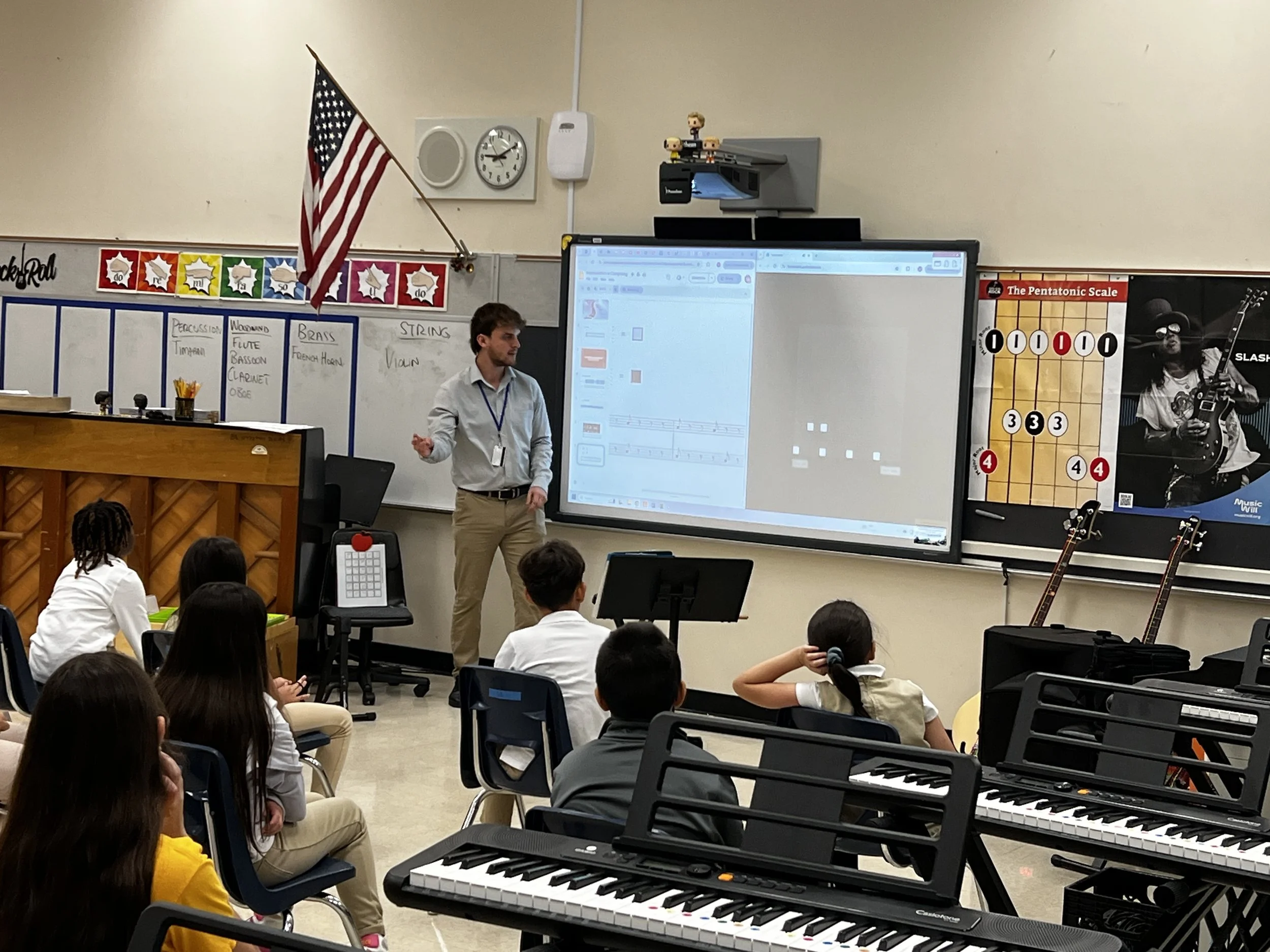
Teaching Videos
Exploring Composition
In our mini curriculum on careers in music, we take a day to explore the compositional and improvisational aspects of music. After a classroom discussion in differentiating the two, I lead an activity where they practice improvising over the clave rhythm. In this video, you will see the second activity for the lesson. I demonstrate the use of time and pitch by composing a clave rhythm into the program, Tonematrix. Students then have a chance to compose by integrating knowledge of math and music; kids are selected to give their x and y coordinates on the graph to get the box of their choosing. After some more experimentation, I lead the class in a second discussion, pushing them to discover the functionality of the ToneMatrix tool. After some trial and error, we conclude by the end of the video that the x axis is measured by time and the y axis is measured by pitch. Finally, I present a sheet music equivalent of what was written out in ToneMatrix, noting how an “full box” is the same as an eighth note, and an “empty box” is the same as an eigth note rest. Since the view of the screen is obstructed, I’ve provided the slideshow used for this lesson. This lesson addresses standard MU.5.S.1.2: compose short vocal or instrumental pieces using a variety of sound sources, with ToneMatrix used as the primary sound source.
Link to ToneMatrix: https://tonematrix.audiotool.com/
Clave Variations
In this part of the mini curriculum, I prepare the students to the learn the song, “Girl From Ipanema.” Through out this entire semester, the students lessons are based in the use of the clave rhythm. They started with the 3 -2 clave for lessons 1 - 3. In this video, they start their class learning the 2 - 3 clave for the first time. Learning the 2 -3 clave will help them prepare for the song as they switch between singing verses and performing the rhythms. Performing this rhythm with a different foot pattern has been a difficult challenge, and switching to a 2 - 3 clave also adds complexity. In light of this, I break down the rhythm in multiple ways to slowly ease into the final product. In this video, I start by using a pair of claves to demonstrate the rhythm as they are seeing it on the board. I ask all of them to perform their hand rhythm (the clave) and their foot rhythm (half notes) separately. After isolating each of those rhythms, the students practice switching between the two (dictated by myself) as a class. Many have trouble with the rest at the beginning of the clave, so I suggest they use a “pause” or inhale to replace that rest. The last portion of the video shows the class split in half, allowing one group to perform the clave while the other performs the foot rhythm, which should effectively always produce the sound of the rhythms together. The final goal will have students performing both rhythms in the hands and feet simultaneously. They apply very similar techniques they learned from previous classes to reconstruct the 3 -2 clave into the 2 -3 clave, similar to the goals of standard MU.5.S.2.2.